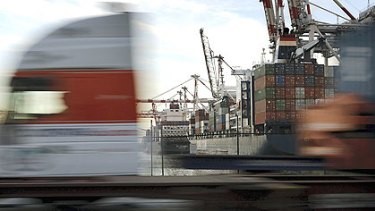The Australian Border Force (ABF) has issued Australian Customs Notice No. 2022/11:
“Reporting obligations for goods exported for repair, alteration or renovation and subsequent re-importation.” Following is some relevant information.
Export Requirements
The ABF has the following requirements for classifying all goods exported for repair, alteration or renovation and subsequent re-importation:
· For each line of goods – the commodity classification code (Export Statistical Item) for the goods, as shown in the AHECC table on the ABS website. Goods that are being exported following sale must be classified to in-kind merchandise trade AHECC codes.
– All goods not intended for sale (e.g. they are being repaired, returned for maintenance etc.) should be reported as non-merchandise trade (e.g. 9901.10). This includes goods that require an export permit to be obtained prior to export.
Accurate Export Data
Exporters must accurately complete all fields on an export declaration.
Accurate export data is crucial to the Government and the private sector for various reasons, including:
· Use of export entry data by the ABF when risk assessing outbound cargo to ensure that relevant border controls are maintained and that Government revenue is protected.
· Australian and overseas investors use export statistics to conduct market research and identify business opportunities.
· Export statistics are used to monitor and assess market share and trading patterns, and the subsequent compilation and dissemination of official international trade statistics.
There are provisions in the Customs Act that make it an offence to provide false and misleading statements to the ABF which may result in financial penalties or prosecution.
For the full PDF text of the above notice, click HERE.
Importing goods (including permit goods) that are being returned after repair, alteration or renovation
An import declaration is required for goods that have been sent overseas for repair or renovation and are returned to Australia. If the exported goods are not returning, it is the responsibility of the exporter (or agent) to amend the export declaration as soon as they know.
An import permit may also be required for the returning/replacement goods.
If a product is exported for repair but is upgraded or replaced with an entirely different product (either new or used) and the good that return are no longer the goods that were exported, then the goods must be imported as new, and duty and GST are owed, unless there are other eligible concessions.
Under the Australian Customs Tariff Schedule 4, Item 16 states that certain goods may be exported for repair and return, duty free:
“Item 16 – Repair goods under an article of a free trade agreement”.
It states: Goods that are covered by an article of a free trade agreement between Australia and one or more other countries, being an article that is prescribed by by-law and that relates to the export of goods from Australia for one or more of the following:
- repair;
- renovation;
- alteration;
- other similar processes
For further information about goods exported with the intention of re-importing, contact us here at Colless Young. As licensed Customs Brokers and International Freight Forwarders, we handle all your shipping and clearance needs. We are based in Brisbane and offer a complete range of logistics services, for both airfreight and sea cargo, import and export – including fumigation, warehousing and trucking – through all Australian ports and airports.

